Doctor Who’s Best Episodes: The 1960s Era
William Hartnell and Patrick Troughton’s Doctors shone in the finest stories of a time when Doctor Who experimented, evolved and grew in unlikely directions.
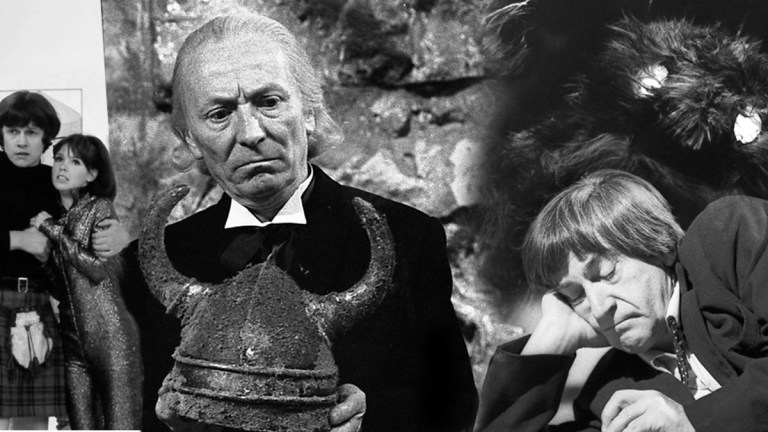
Warning: contains spoilers for all episodes mentioned.
In some respects Doctor Who in the 1960s had an advantage over the rest of the show: it was brand new, it built in the loss of the lead actors into the format, and it was largely free of mythology weighing it down. Indeed, with the reveal of the Doctor’s backstory in the final story of the decade, it stands apart in the Doctor remaining a genuine mystery throughout.
It was also a time of experimentation, when Doctor Who tried different styles and genres to see what it could get away with. Occasionally the show coagulated into a consistent format (Season 5’s ‘base under siege’ stories, for example), but there was also the variety of Season 2, probably the show’s most successful attempt at grimdark storytelling in Season 3, and the occasional subversive or anarchic flourish as Patrick Troughton’s Doctor shone outside a more standardised action/adventure format.
While the formulaic 1960s stories are clearly influential, what mostly lingers from this period is something that was clear from the first Dalek story: what gave Doctor Who the chance to make such unique and memorable television was its appeal as a show with monsters. Whether it was faceless aliens kidnapping young people on planes, or giant ants doing ballet through a lens of petroleum jelly, the show put together memorable and fantastical images that – seen once – haunted the imaginations and memories of viewers.
Ultimately, the viewing figures declined as the show tried to bottle lightning with the new Daleks or Cybermen (leading to the Doctor attempting to defend himself at his trial by pointing out that he bested the Quarks, which possibly just made the Time Lords take pity on him), and the novelty was wearing off. If Doctor Who had ended with ‘The War Games’ though, what an amazing journey: its success was ensured by the Daleks, but over the course of the decade, it morphed into at least four different shows, providing the foundation for future genre-hopping and expansion. Here we are, over five decades later, still talking about it.
10. The Rescue (Season 2, 1965)
Written by David Whitaker. Directed by Christopher Barry.
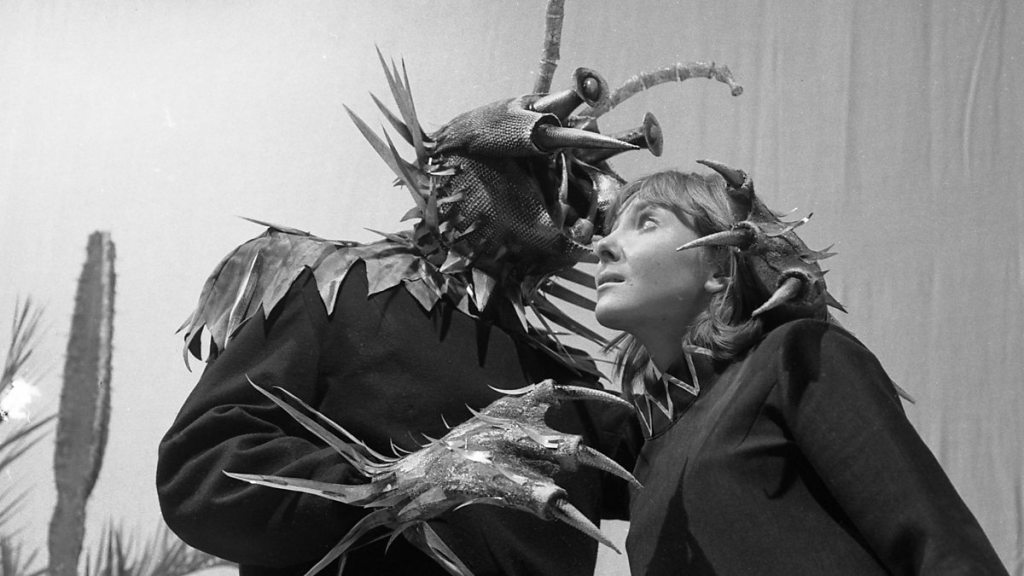
In which the Doctor and his friends, fresh from saying goodbye to the Doctor’s granddaughter Susan, meet the stranded Vicki and Bennett who are being menaced by a creature called Koquillion.
There are a few notable moments here: the Doctor continues developing into a more heroic character, it’s hard to imagine the character we met in ‘An Unearthly Child’ acting like the man who faces down Koquillion here. Director David Whitaker does an early meta-joke with the reveal of Koquillion turning out to be a man in a rubber monster costume. This is an example of a story that feels slight and charming but features a man willing to commit genocide to avoid being imprisoned for one murder.
This story introduces Vicki as the new companion in the wake of Susan’s departure in ‘The Dalek Invasion of Earth’, and can often be overlooked. It isn’t a huge Dalek story that cements the show in the public consciousness, launching a mania that would ensure the show’s longevity throughout this decade. It isn’t the story where the Doctor wistfully says goodbye to his granddaughter, or one where clips are used to represent William Hartnell in the 20th anniversary special. It’s a two-parter designed to bring a new character into the cast, but this is another important milestone for the series.
Vicki is the first person, outside of his family, who joins the Doctor willingly. Having been introduced to us as an abrupt, selfish old wizard – dismissive of other people and races he considered beneath him – the Doctor here is charm personified as he meets his new companion. Of course he’s grieving Susan’s absence, and there’s a lovely moment at the start where he asks Susan for something and then realises she’s gone, and Barbara moves in to comfort him. It’s a sign of how far the characters have come, how their relationship has changed from antagonism to something that could actually sustain forty series. That’s what’s special about ‘The Rescue’, it’s quickly and quietly confirming that this show could go on, that there was an appeal to it beyond its monsters, watching these little surrogate families ebb, flow and coalesce.
9. The Mind Robber (Season 6, 1968)
Written by Derrick Sherwin and Peter Ling. Directed by David Maloney.
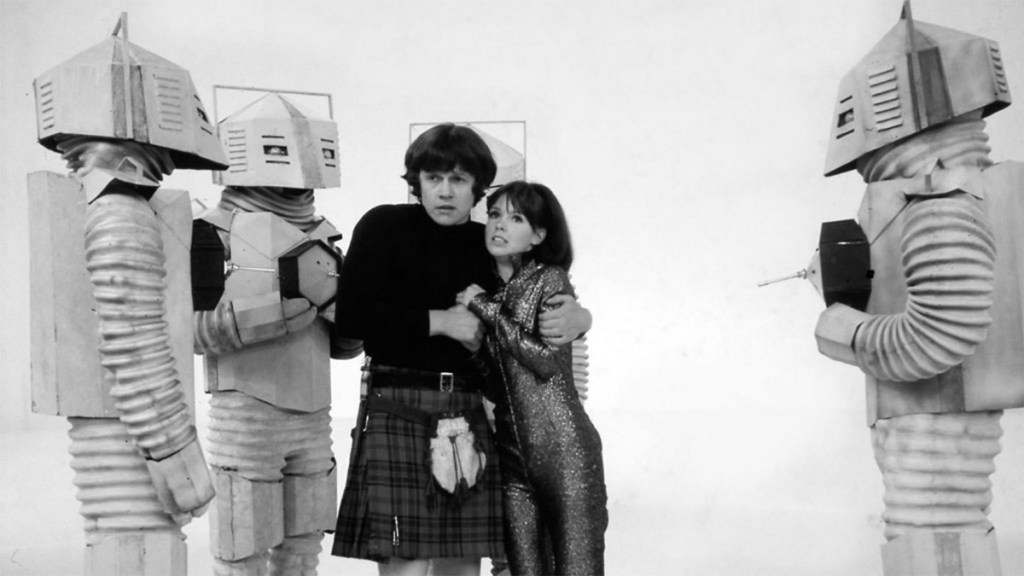
In which the Doctor and his friends find themselves encountering fictional characters, and have to try to avoid becoming fictional themselves.
Doctor Who is a show that moves through different genres, and in the 1960s it tried a lot of things out to see if they would stick. Here we have a story that is specifically taking a child’s idea of fiction and story logic, and giving it a science-fiction explanation, so we have a heady mix of fairy tales and children’s characters (and the occasional appearance from out of copyright characters, like the lead in Gulliver’s Travels). The Doctor has to complete a jigsaw of Jamie’s face. Unicorns and clockwork soldiers attack the Doctor and his friends. Rapunzel is disappointed to find that the man who has climbed her hair is a Scottish piper’s son and not a prince. It’s enjoyably witty with reference points clearly aimed at younger children and the parents who read stories to them.
Despite Doctor Who being billed as a family show, there are times when it’s not clear if children are being considered as potential viewers, and there are also fans who seem embarrassed to like a show aimed at children. Fandom can be vicious when the show is more obviously being aimed at children – a strange criticism considering the target demographic. ‘The Mind Robber’ was, on broadcast, no exception. Viewer reports were negative, complaining that the story was too fantasy orientated and silly.
‘The Mind Robber’ flits between the childish and sinister, with the characters having to work out the rules of where they’ve landed as they go. This is similar to many Hartnell stories, the difference being that here they’re working out fairy tale logic rather than why the metal city smells like dodgems. The unseen antagonists here are attempting to weaponise stories, something echoed by Series 10’s ‘Extremis’. Like all the best children’s tales, this is unsettling stuff that masks its disquieting ideas through tone. It’s a story about stories; Jackanory meets The Matrix.
8. The Web of Fear (Season 5, 1968)
Written by Mervyn Haisman and Henry Lincoln. Directed by Douglas Camfield.
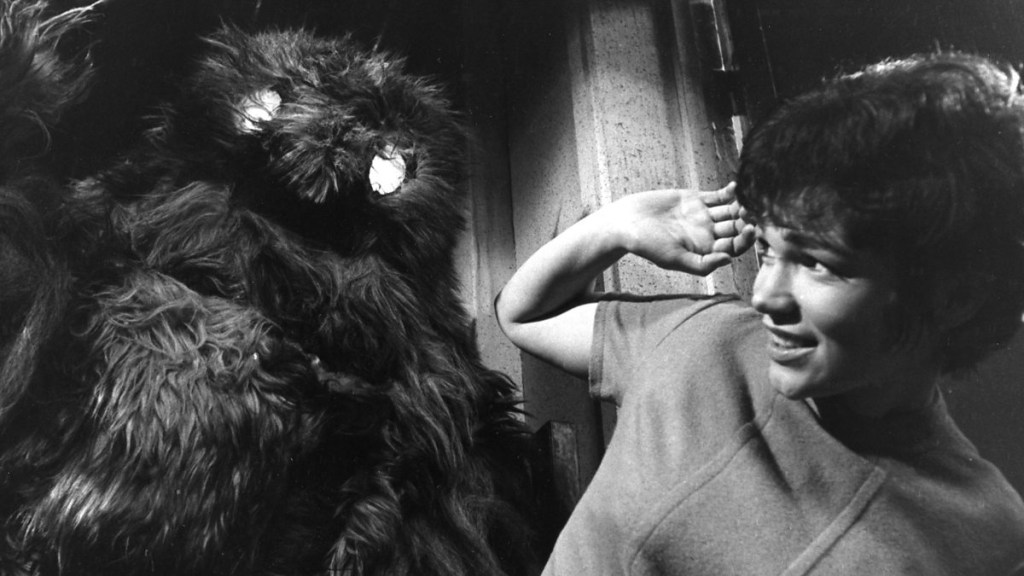
In which the Doctor and his friends arrive in an abandoned London, filled with cobweb-covered bodies and robotic servants of a disembodied intelligence.
Season 5 consists mostly of ‘base under siege’ stories, mostly an economic decision to centre instalments around one set used in every episode. Each story consisted of said set being invaded – quite slowly – by the Monster of the Week. This, unsurprisingly, results in a fairly formulaic series, but it’s also one that shaped a lot of people’s view of Doctor Who. When you’re not watching these stories consecutively (to avoid repetition) they vary in quality, and ‘The Web of Fear’ is the story that maintains momentum for most of its runtime. This is through a combination of strong set pieces and an air of paranoia that lasts until the final episode (this consists of delaying getting everyone in place for the finale, so is a slog, but the actual resolution pays off quite well with the antagonist expelled but the Doctor frustrated there wasn’t a more decisive victory). It also stands out by virtue of most of the characters being competent.
Elsewhere we get variations on authority figures distrusting the Doctor and not listening to him – and indeed people simply being stupid – all to fill up screentime. In ‘The Web of Fear’ we have soldiers fighting against robot Yeti, and they’re actually good at their jobs. They still die, though, which is partly why this is such an effective horror story.
The idea of robot Yeti fighting soldiers on the London Underground could be realised poorly. Controlled by the Great Intelligence (as seen in ‘The Abominable Snowmen’ and the second half of Series 7), these Yeti spray a deadly mist that leaves soldiers screaming in agony and their corpses covered in cobwebs, or they simply bludgeon victims to death. Set mostly underground, it’s a very well-made story that stands the test of time better than many around it by making the characters capable but out of their depth, trapped in an increasingly desperate situation as the enemy closes in.
7. The Time Meddler (Season 2, 1965)
Written by Dennis Spooner. Directed by Douglas Camfield.
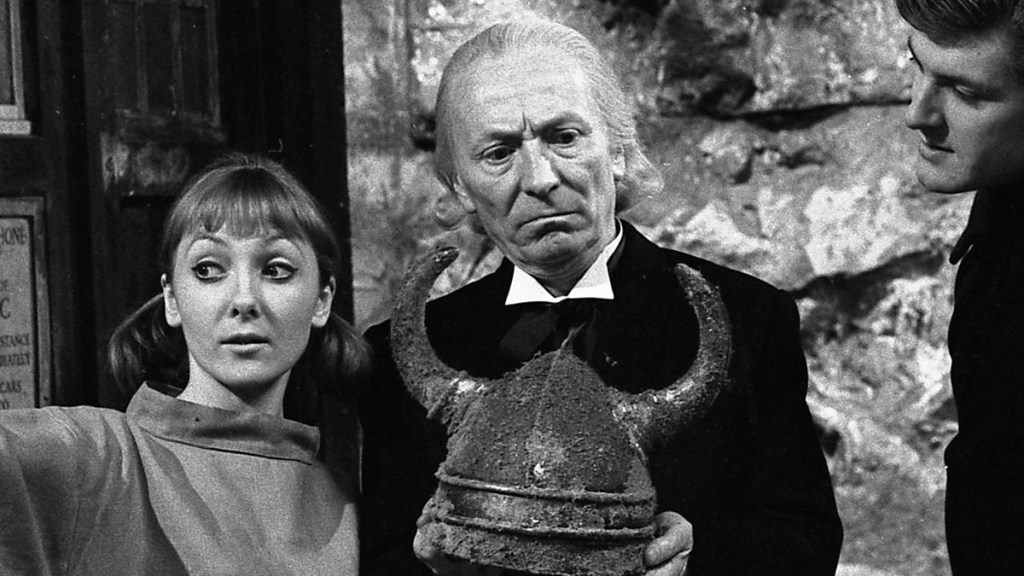
In which the Doctor and Vicki, missing the recently departed Ian and Barbara, discover astronaut Steven has found his way on board the TARDIS. They then arrive in Northumbria in 1066, where there’s an unusual monk and one of the locals is wearing a watch…
Writer Dennis Spooner, who also contributed significantly to Stingray, was Doctor Who’s second script editor. His first story – ‘The Romans’ – is regarded as the first out-and-out comedy (though it’s also extremely harrowing in places, and some of the comedy has aged well, whereas Nero pursuing Barbara – like Benny Hill with the power of life and death over thousands of people – hasn’t). ‘The Time Meddler’ is similar, but with an added science-fiction element of future technology appearing in 10th Century England. It’s not quite as grim as ‘The Romans’, despite Viking attacks, and it’s funnier. It’s also the first pseudo-historical story, where the TARDIS crew are not the only anachronistic element.
A highlight of ‘The Romans’ is seeing the TARDIS crew hanging out in a villa, drinking wine and generally having a lot of fun together. Spooner writes very strong dialogue here too, the relationships between the new leads (this is Peter Purves’ first story as Steven Taylor) are clearly defined, and director Douglas Camfield sets a tone by downplaying the comedy for the most part (though the Vikings running to and fro at the end does feel a bit Scooby Doo). As anyone who’s seen a university debating society will tell you though, being witty does not automatically make something good. ‘The Time Meddler’ is more than just some droll content. It confidently, and in a similarly downplayed manner to the comedy, drops in significant developments for the series: another TARDIS! Another Time Lord!
The Meddling Monk’s approach to history is, it has to be said, more fun than the Doctor’s. The idea of using anti-grav machines to build Stonehenge feels essentially harmless, but changing the outcome of the battles of 1066 is more contentious. The Doctor is furious at the idea, even if the Monk insists the outcome would be better. There’s no argument as to whether this is true, the Doctor simply dismisses it. Thus, the show’s attitude towards preserving history is sealed, primarily because it was devised as an educational show that would teach viewers about history rather than rewrite it.
‘The Time Meddler’ is full of new ideas and approaches for the show while also managing to introduce a new character and be the budget-saving episode after ‘The Chase’. Also we should mention Vicki. She’s a replacement for Susan in many ways (the young person who gets into trouble) but she’s strident and confident in her beliefs, not taking any crap from people who want to kill her or even from her new astronaut friend, and having the Doctor’s back at all times. She’s also incredibly astute when the Monk starts playing games with her and Steven. Basically Vicki is great, more celebrating Vicki please.
6. The Dalek Invasion of Earth (Season 2, 1964)
Written by Terry Nation. Directed by Richard Martin.
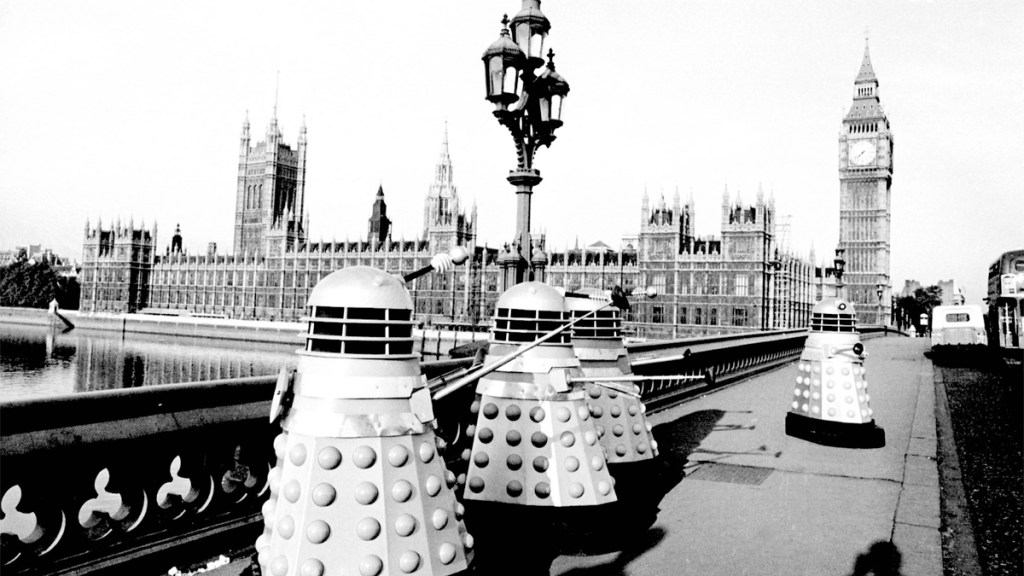
In which the Doctor and his friends arrive in a future abandoned London, and discover that the Daleks have conquered the Earth. Why, though, are they digging a huge mine in Bedfordshire?
If the first Dalek story ensured public interest in Doctor Who, then this capitalised on it and ensured Dalekmania would flourish. The show was becoming entrenched in pop culture via the Daleks. Watching it now, ‘The Dalek Invasion of Earth’ is both hokey B-movie fun and relentless grim war story. It wouldn’t be until ‘Genesis of the Daleks’ that Terry Nation would revisit the latter tone in Doctor Who, which is a shame because he was very good at it.
With the Daleks inspired by fears of nuclear war, Nation looked back to the conflict where the bomb first dropped, to the home front and the Blitz. Children watching this might have heard stories, parents watching may have lived through it. Bringing the Daleks to Earth and showing them having successfully invaded is both exciting and terrifying, as well as being easier to realise on a Doctor Who budget. Where this story excels is in its combination of Nation’s styles, as seen in the Dalek plot to hollow out the planet and use it as a spaceship. On the one hand, this is delirious pulpy nonsense but on the other, it’s so weird and so alien that it works on a register Nation never wrote in again: the Daleks are tampering with the forces of creation, which makes them seem like mortals aspiring to angelic or godlike capabilities. Or, more simply, uncanny and unknowable to the extent that humans cannot parse their motivations.
Speaking of which, we also see the first companion departure as the Doctor chooses to leave Susan behind as she’s fallen in love. Allowing for TV conventions – David and Susan will probably be fine and get married, this is not yet a show that would consider the pairing of two young and potentially traumatised people to be far from a sure thing – the Doctor is being unknowable here, because while he’s trying to do something good for Susan, it’s hard to completely fathom the wisdom of leaving her behind on a devastated planet because you’re really confident she’s in love. Whatever your reading of this scene, it’s a bittersweet moment that presages the departure of Donna in ‘Journey’s End’ with a huge Dalek invasion adventure concluding with the Doctor ensuring a companion’s departure.
5. The Aztecs (Season 1, 1964)
Written by John Lucarotti. Directed by John Crockett.

In which the Doctor and his friends arrive in 15th century Mexico; Barbara is mistaken for a goddess and attempts to stop the practice of human sacrifice.
‘The Aztecs’ is unmistakably a product of British television in 1964. It’s also character driven, layered, and handsomely made. As you’re never going to find a 1960s Doctor Who story that comes close to the pace of contemporary television, may we suggest this story as a good introduction to the early years of the show? It covers the Televised Theatre style of early TV drama (right down to John Ringham’s performance as Tlotoxl, High Priest of Sacrifice – straight out of Shakespeare’s Richard III), the fight scenes are slow and evidently choreographed, the high quality of the pictures on DVD mean you can see the backgrounds are painted drapes. Not everyone’s going to find these things interesting, or admire the detail on those drapes, but there’s a lot in ‘The Aztecs’ that you can still find in the show today.
Jacqueline Hill gets a chance to shine as Barbara, here attempting to impose her values on the Aztecs with the Doctor arguing against her because “you can’t change history, not one line” – dialogue that would be very influential going forward and lay out structure and constraints for stories set in the past. Meanwhile the Doctor, in an attempt to retrieve the TARDIS, gets engaged to someone who might have useful information but ends up being smitten anyway. A companion’s reaction to the past driving the story, fixed points in time and the Doctor as a romantic figure are all elements of the show familiar to people who grew up on the post-2005 version.
However, this story’s also brutal in a way that we don’t often see anymore. The main motivation for the TARDIS crew is to escape safely. Ian is put into a kill-or-be-killed situation and Susan is instructed how to be a good bride for an arranged marriage. The seriousness of these moral quandaries is enhanced by how personal things get. Ian is fighting Ixta, someone he and the audience know as a character in their own right, rather than a nameless soldier. It’s not the last time Ian will be in this position either. Susan’s subplot is slight due to Carole Ann Ford being on holiday during this story (the production of Doctor Who took up most of the year so actors had holidays during individual episodes) but there’s still a storyline for each of the main characters in this four-parter.
4. The War Games (Season 6, 1969)
Written by Terrance Dicks and Malcolm Hulke. Directed by David Maloney.
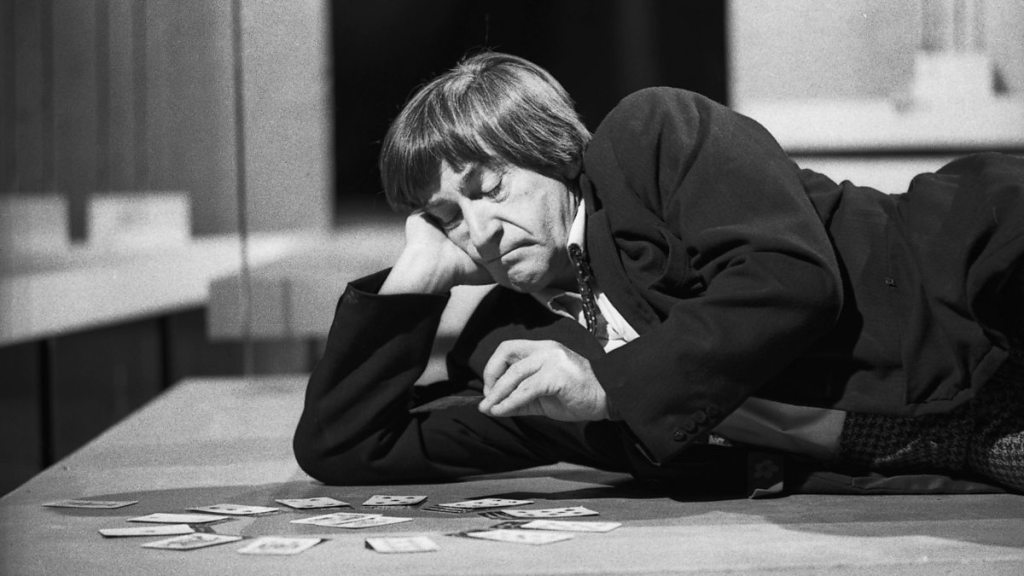
In which the Doctor and his friends find themselves in the trenches of World War One, then pursued by Roman soldiers as they uncover groups of humans have been abducted and forced to play through a series of war games, but why? And by who?
In some respects, this does something similar to ‘The Timeless Children’ by revealing a secret past for the Doctor that the audience previously wasn’t aware of, but the only reason this one drags is because it’s five times longer than the Series 12 finale.
As with “The Mind Robber”, behind-the-scenes difficulties led to a unique episode-length, and so writer and director Dicks and Hulke were tasked with not only revealing the Doctor’s backstory, but also setting up the following series’ new format. Plus they were stretching this out over ten weeks (hence Dicks’ joke about their motivation behind the story being simply to avoid the Test Card being broadcast).
Despite their best efforts, there is some repetition here that is more apparent when watching multiple episodes at a time, as opposed to over ten weeks as broadcast. Sensibly though, the story functions as three mini-adventures within the larger one, starting with a mystery that seems to be based around World War One, then uniting the different soldiers across the zones of the War Games, then finally overthrowing the War Lords and reckoning with the Time Lords. The start and end are especially strong, the middle sags somewhat but keeps enough momentum going.
The strength of the initial idea provides a strong foundation for the whole story. Taking the story through armies that loom large in children’s literature and storytelling and then showing the soldiers being exploited by a distant elite is a clever allegory that isn’t dissimilar to the Doctor’s relationship with his own people. The story starts building towards the Time Lords’ first appearance as soon as the Doctor and the War Chief recognise each other (an electrifying moment) with the Doctor realising he has to ask them for help. In that moment he gives up his freedom – especially galling for this trickster version of the character – the show seemingly fills in most of its central mystery, and a new format is set up. One day the Doctor will regain control of the TARDIS and what’s more will be able to pilot it reasonably well. If, after this point, the Doctor wanders, then it will be by choice.
3. The Macra Terror (Season 4, 1966)
Written by Ian Stuart Black. Directed by John Davies.
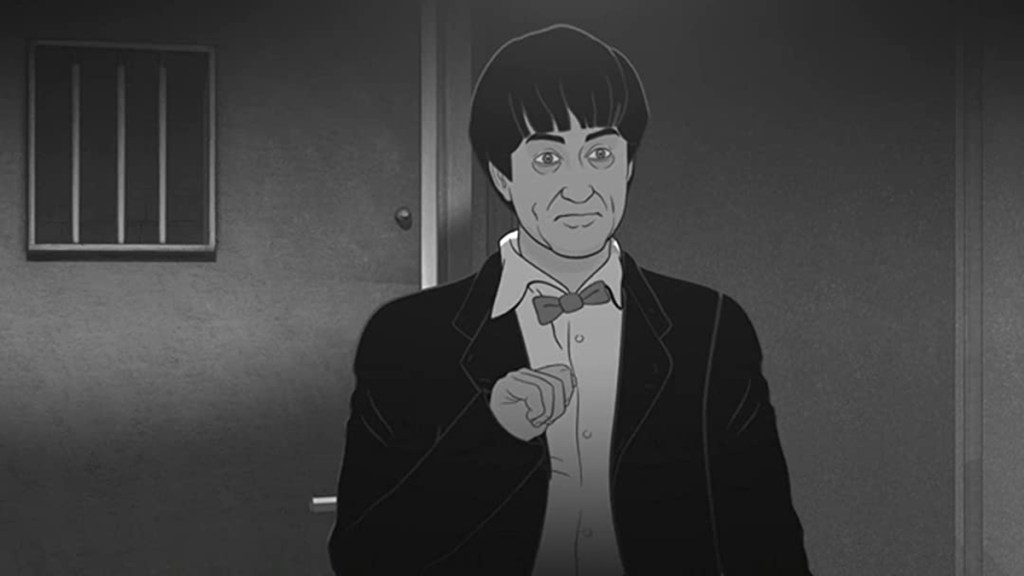
In which the Doctor and his friends discover a human colony is being menaced by a group of giant crabs.
There’s a small run of stories in Season 4 where the show is in transition to the ‘base under siege’ format, trying it out with its Cybermen stories (‘The Tenth Planet’ and ‘The Moonbase’), but we also get the last ‘Pure Historical’ story and some delightfully weird monster stories that go off piste. ‘The Macra Terror’ is the highlight of these.
Russell T. Davies brought the Macra back in Series 3’s ‘Gridlock’, but as less intelligent creatures. ‘The Macra Terror’ has its giant animals using mental conditioning and irritating jingles to lull the colonists into complacency, which feels like it could fit right in to one of Davies’ series. The sense of sinister jauntiness, barked instructions to have fun, and forced order being disrupted by this new, scruffier Doctor, who – along with Jamie – is the only one who sees through the shrill façade. However glaring it may seem that something is wrong here, the lack of subtlety has actually aged well: a group of people denying the evidence of their own eyes to believe in an idealised version of their world? Jaunty celebratory music and the constant dissemination of propaganda/fake news through various compromised authority figures; you can imagine a Defund the Police campaign in this colony.
It’s incredibly satisfying watching Troughton’s Doctor take an instant distrust to the authority figures, getting stuck in disrupting things and enjoying himself enormously. Equally, it’s unnerving to watch Michael Craze’s Ben succumb to the colony’s programming, barking dogma at his friends and insisting there is nothing wrong at the colony while staring at a giant malevolent crab. The Doctor’s response is calm and understanding in contrast to his undermining the colony authorities, his good-natured affability bewildering everyone as he relishes destroying the system. It’s a fantastic showcase for the Second Doctor, even if you’re listening to the audio or watching the animated release (which has a pretty good go at matching Troughton’s facial expressions).
From the surviving footage from the original, there’s also something to be said for the sheer ambition of having giant fibreglass crabs as the villains. The original suggestion from Script Editor Gerry Davis was monsters living underneath a holiday camp (which is inspired), and spiders were settled on as the basis for the monster because the show hadn’t done those before. In writing, they became more insectoid, and Davis decided they should be more crab-like to make them distinct from the Zarbi (from ‘The Web Planet’). The huge prop was ungainly and hard to move, but frankly it’s tonally fitting for this gonzo adventure that combines the atmosphere of Butlins with a burgeoning fascist dictatorship.
2. The Myth Makers (Season 3, 1965)
Written by Donald Cotton. Directed by Michael Leeston-Smith.

In which the Doctor and his friends find themselves at the siege of Troy.
Though this story only exists as audio, it’s still an excellent listen because – primarily – it’s grimly funny. Tonally, it’s not dissimilar to Blackadder and some Monty Python, using absurdity with a rising undertone of seriousness to make a point about mythology. However, this story aired four years before Python debuted and eighteen before Blackadder. It’s unlikely to have been an influence but the similarities are plain.
The comedy is bleakly farcical, with the TARDIS arriving as Hector is about to defeat Achilles, but the Doctor steps out and distracts him allowing Achilles to run him through. The faux Shakespearian dialogue and Vicki’s talk of heroes is contrasted with the brutal and venal reality: Achilles in a shameless liar, Paris a Bertie Wooster type, Odysseus a savvy brute, and the Kings cynical and petty old men. The most sensible voices are ignored. The central joke is that the siege of legend is a coarse affair populated by small, bickering people. The reality is shown as farce compared to the legend, not dissimilar to Blackadder Goes Forth.
Like Star Wars showing a worn and used world, here we have the wonders of the gods rendered prosaic and mundane, with King Priam wearily intoning “have a word with them Cassandra” when Paris suggests the gods might not like the TARDIS as an offering.
There’s an interesting take on a historical story: both armies believe the TARDIS crew’s claim to be from the future and so force them to use their knowledge to defeat their enemy. The Doctor tries to avoid the Wooden Horse gambit but ultimately can’t persuade the Greeks to go with any other plan, and his increasingly desperate attempts to outwit Odysseus – the main antagonist in this story – culminate in a frantic finale. Darkly comic and grim stuff, and you wouldn’t want the show to be like this all the time, but come the story’s end, Vicki is still a voice of hope amid the darkness.
1. The Power of the Daleks (Season 4, 1966)
Written by David Whitaker and Dennis Spooner. Directed by Christopher Barry.
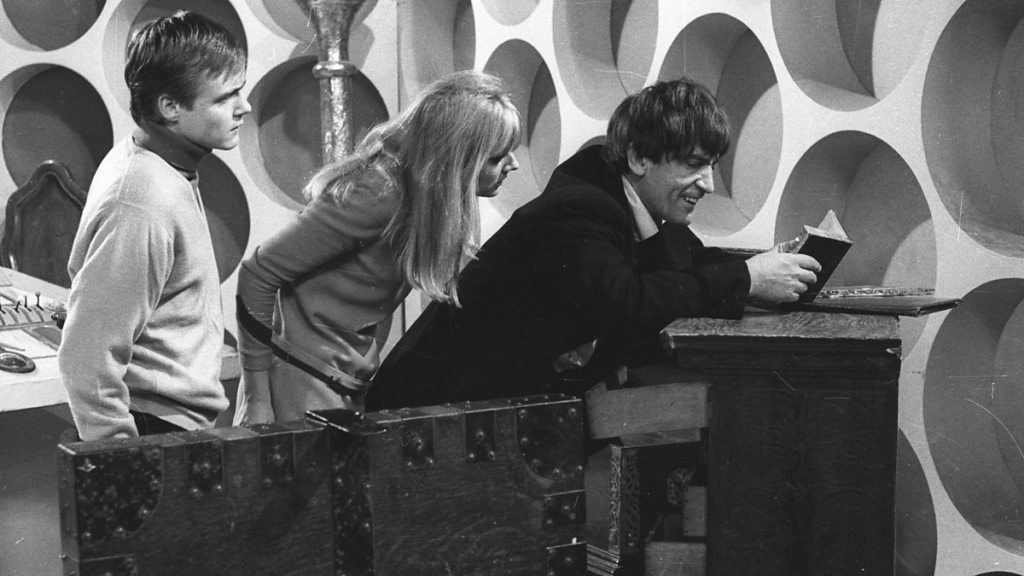
In which the newly regenerated Doctor tries to convince a human colony not to awaken the occupants of a crashed Dalek ship.
This was the debut of the Second Doctor and a big development for the Daleks, overseen by the show’s first two Script Editors (credited to David Whitaker but rewritten by Dennis Spooner). Whitaker’s initial drafts suggested the existence of pre-Hartnell Doctors and that the Doctor’s homeworld had been destroyed by the Daleks. Due to the scripts being overlong and Whitaker deciding to write a generic Doctor (due to no-one having decided exactly how Troughton was going to play the role yet), Spooner was brought in specifically to focus on the new Doctor’s character and to trim the scripts.
The Daleks are in this story because producer Innes Lloyd felt that viewers who were upset at the regeneration might tune in if the show’s most popular monsters were involved. This means that if he hadn’t been busy working on The Baron,Terry Nation might have been given the job of shaping the future of Doctor Who.
Certainly Whitaker and Spooner’s writing for the Daleks is different to Nation’s, being less pulpy (though still containing an element of pulp) and more interested in the Daleks as scheming, intelligent and relentless creatures. Here, a Dalek is discovered by a scientist called Lesterson, who believes they could be of use to the human colony on the planet Vulcan. The Dalek, which has no gun stick, plays along with this idea and manipulates the colonists into restoring more Daleks from a crashed capsule. The Doctor’s warnings come across as manic and far-fetched, and the colonists are too concerned with their own power struggles and reputations to pay attention anyway. The tension builds. A revolution in the colony gives the Daleks the opportunity to take both sides unawares. They are at their coldest here, ruthless and efficient but also sadistic.
Tying into this atmosphere of suspicion and betrayals is the new Doctor doing very little to reassure his companions, Polly and Ben, that he is even the same person. Indeed when he saves the day it’s not even clear if he knew what he was doing. The sheer nerve it took to do this – a vaguely defined change of appearance in the main character, followed by his acting far from reassuringly – is demonstrated by the initial audience appreciation figures, which started extremely low but started rising by the end of the story. It’s thematically strong, well-paced and brutal when it has to be. It also absolutely defines the Doctor in opposition to the Daleks, telling the audience that this is the same character by the way they react to each other. The power of the Daleks is not merely destruction, it is to give the Doctor an identity, a purpose, a reason to change.
Classic Doctor Who is currently available to stream on BritBox in the UK and the US.
